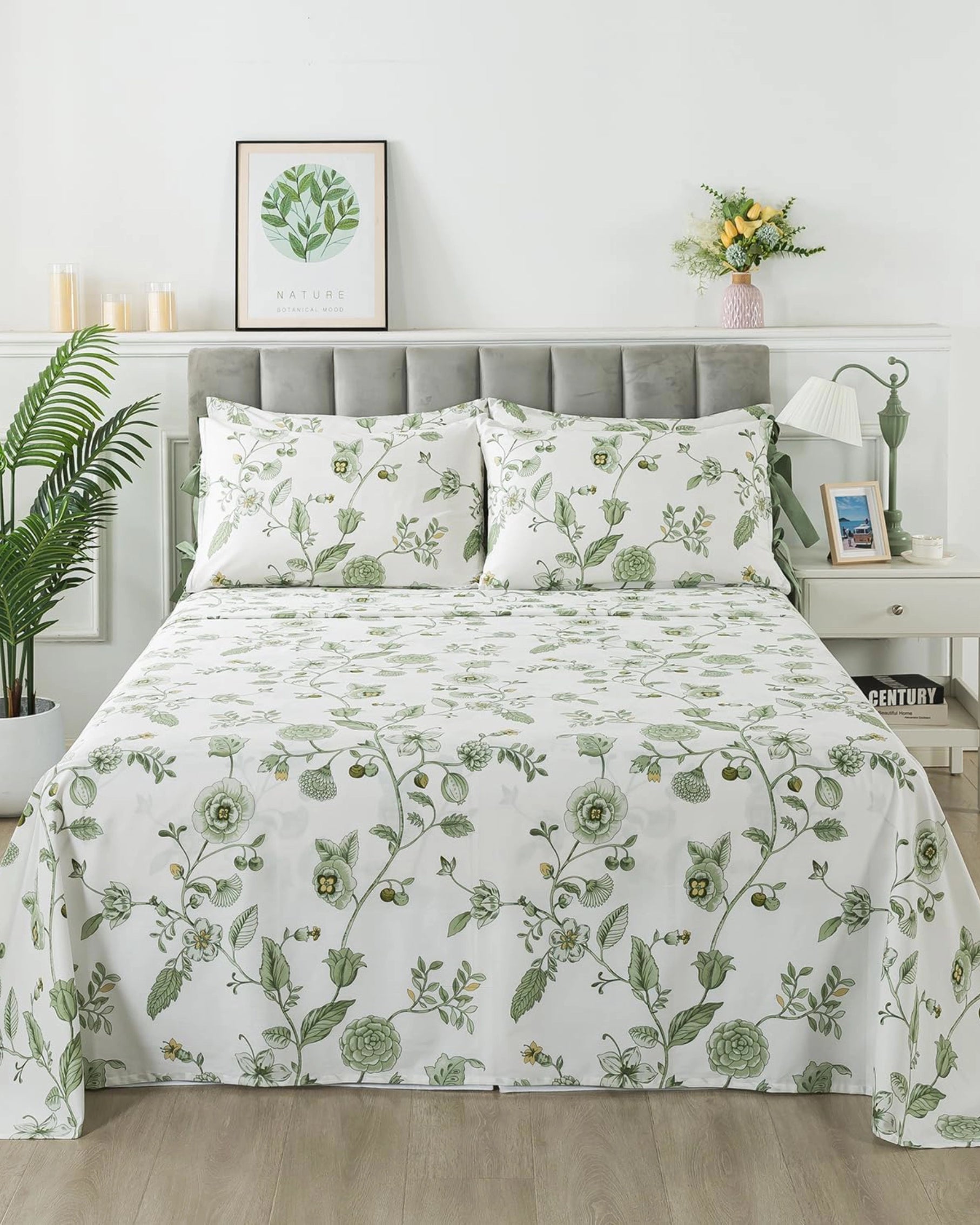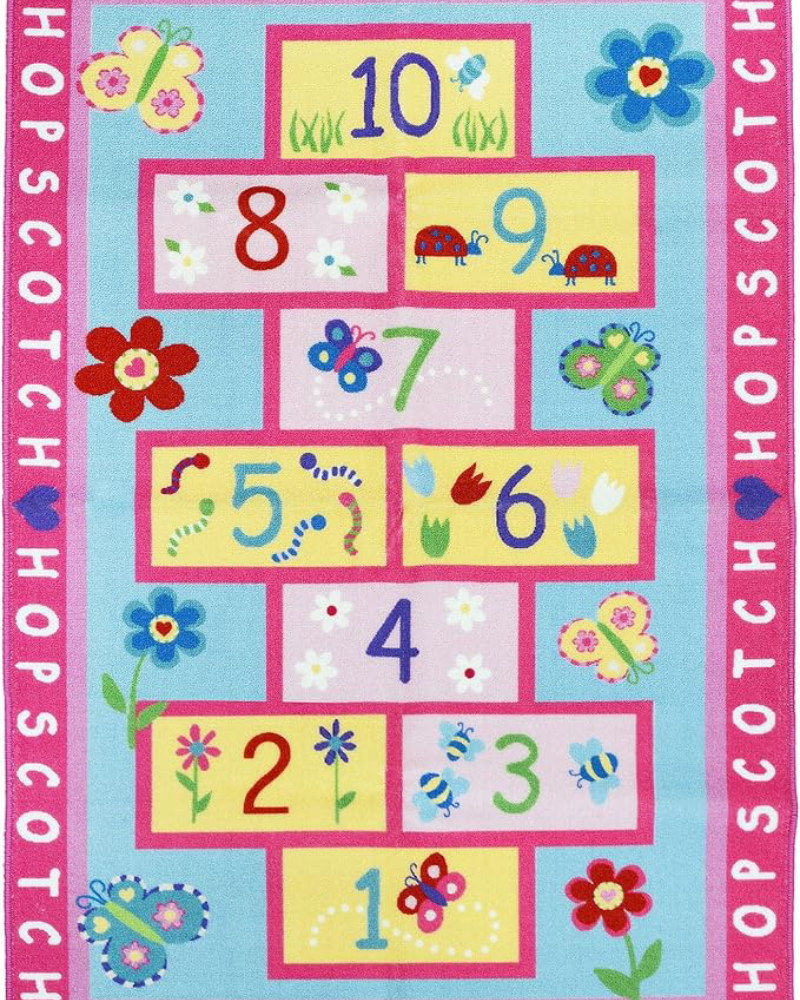Floral designs are more than just beautiful—they're meaningful. Across centuries and continents, flowers in textiles have symbolized love, prosperity, spirituality, and nature’s cycle of life. Whether embroidered on silk, woven into cotton, or printed on linen, floral motifs are a universal language of expression.
At FADFAY, we celebrate this timeless beauty through our romantic, vintage-inspired bedding collections. But where do these floral traditions come from—and what stories do they tell?
Let’s take a journey through the world’s most iconic floral textile traditions.
1. China: Peonies and Plum Blossoms in Silk Embroidery
In Chinese textile tradition, floral motifs are deeply symbolic. The peony, often referred to as the “king of flowers,” symbolizes wealth, honor, and feminine beauty. You'll often find it richly embroidered on silk robes, tapestries, and bedding.
The plum blossom, meanwhile, represents resilience and renewal—as it blooms in late winter, it stands for hope in the face of hardship. Its delicate five-petaled form is a common feature in traditional textile art.
✧ FADFAY Inspiration: Our floral bedding often draws from East Asian aesthetics, blending elegance with symbolism.
2. France: Romantic Roses and Rococo Charm
In 18th-century France, especially during the Rococo period, floral textiles exploded with detail and softness. Roses, carnations, and forget-me-nots were painted, printed, and woven into everything from upholstery to bedding.
The French rose, in particular, came to symbolize romance, femininity, and elegance. Combined with ruffles and lace, these floral patterns defined what we now associate with French country style—something FADFAY proudly reinterprets in modern collections.
3. India: Blossoming Block Prints
India’s centuries-old tradition of hand block printing has gifted the world with intricate, rhythmic floral designs. From Rajasthan to Gujarat, artisans have printed lotus flowers, marigolds, and vines onto cotton using natural dyes.
The lotus, sacred in Indian culture, symbolizes purity, enlightenment, and divine beauty. Indian floral textiles are both practical and deeply spiritual, used in everyday garments and sacred settings alike.
✧ FADFAY Note: The layered, repeating floral patterns in many of our collections echo this rhythmic, hand-crafted spirit.
4. England: Garden Florals and Victorian Sentiment
In the Victorian era, floral motifs took on emotional and poetic meanings. The practice of “floriography” (the language of flowers) meant that roses stood for love, violets for modesty, and lilies for purity.
English textile designers like William Morris brought nature into the home with lush, detailed floral prints on wallpaper, curtains, and bed linens—creating a sense of domestic romance and comfort.
✧ FADFAY Inspiration: Our vintage floral quilts pay tribute to this era’s lush, layered style, reimagined with a lighter modern touch.
5. Japan: Cherry Blossoms and Wabi-Sabi Aesthetics
In Japan, floral textiles are rooted in simplicity, seasonality, and symbolism. The sakura (cherry blossom) is the most iconic, representing the ephemeral beauty of life. These blooms often appear in kimono patterns, futon covers, and noren curtains.
Japanese floral design emphasizes balance and elegance, often incorporating negative space to create a feeling of serenity. Each flower carries seasonal and emotional meaning, connected to poetry and spiritual reflection.
✧ FADFAY Insight: Minimal, elegant floral placements in soft tones are inspired by this aesthetic tradition.
6. Middle East: Stylized Florals in Islamic Art
In Middle Eastern textile traditions, flowers are often geometrically stylized, forming intricate, symmetrical patterns. Due to religious restrictions on depicting human and animal forms, floral motifs became a symbolic and artistic language.
Tulips, lotuses, and palm fronds are popular elements, representing paradise, divine order, and eternal beauty. These patterns are seen in carpets, tapestries, and embroidered textiles across Persia, Turkey, and beyond.
7. Latin America: Bold, Colorful Blooms
Floral embroidery in countries like Mexico and Guatemala is vibrant, joyful, and full of life. Brightly colored flowers are stitched into clothing, tablecloths, and bedding, reflecting community, celebration, and the natural environment.
Often passed down through generations, these textile traditions are a powerful symbol of heritage and identity, with each region having distinct motifs and color palettes.
Why Floral Designs Still Matter Today
Floral textiles connect us to history, culture, and nature. They soften our interiors, bring life to our routines, and allow us to express emotions through color and pattern. Whether romantic or minimalist, symbolic or simply joyful, floral motifs bring warmth, beauty, and story into our homes.
Conclusion: A Blooming Tradition at FADFAY
At FADFAY, our love of floral designs goes beyond decoration—it’s a tribute to the global legacy of textile artistry. Each of our bedding pieces is thoughtfully designed to blend the beauty of world traditions with the comfort of modern living.
So when you choose a floral quilt or pillowcase from FADFAY, you’re not just choosing a pattern—you’re embracing a piece of history, emotion, and timeless style.






